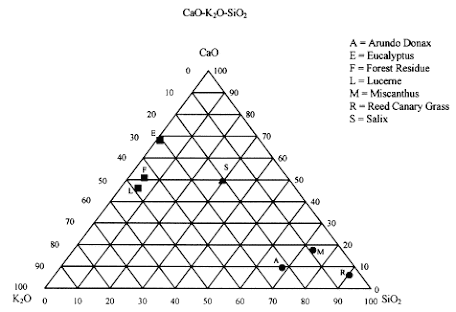Utilization of
biomass with thermal route which is combustion and gasification will be generated
ash residue. While the pyrolysis due to work at low temperatures (400-600 C)
and without oxygen / air then there is no ash. Minerals contained in the
biomass will remain behind in the form of charcoal products in the pyrolysis
process. Ash content and ash chemistry greatly affects the utilization of
biomass in addition to heating value, particle size and moisture content. In
general characterization of ash from biomass is described by Bryers as follows:
1. High silica (Si) and potassium (K) ash content while the calcium (Ca) is low, with low fusion
temperature derived from the group of agricultural biomass wastes.
2. Low silica (Si) and potassium (K) ash content while calcium (Ca) is high, with a high fusion temperature derived from a group of nearly all the woody biomass. Specifications are best for combustion and gasification.
3. High potassium (K) and phosphorus ash content, with low fusion temperature derived from faecal matter such as poultry and cattle dung.
 |
| Biomass Ash Content |
The ash content of
various types of biomass indicate slagging behavior. In general, the higher ash content, the greater
the tendency of its slagging behavior. But this does not mean that low ash
slagging not show the phenomenon. Operating
temperature, ash chemistry and ash content are variables the occurrence of
slagging. If conditions favor the slagging will be even greater. Minerals such
as SiO2, Na2O and K2O more tendency toward the occurrence of slagging. Usually
slagging occurs in biomass with ash content of more than 4% and non-slagging
fuel with ash content less than 4%. According to the composition of the melt,
fuel-biomass fuels are grouped into severe or moderate slagging.
 |
| Biomass Ash Chemistry |
Issues arising from
these ashes is clogging the air intake holes or slagging that will reduce the
thermal efficiency of the gasification and combustion process related air
supply and biomass distribution in the process unit.
 |
| Ash Slagging |
So before processing the biomass waste, consider and note the ash content and its chemistry so that it
can deliver optimum results.






























